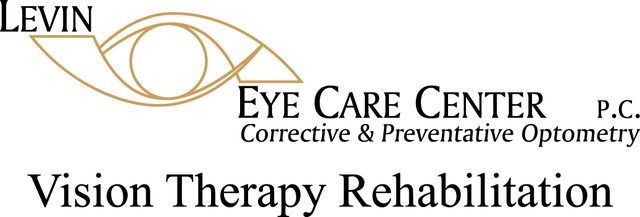
There is help for children having visual difficulties that cannot be managed fully with eyeglasses or contact lenses. It’s a specialty of Dr. Steven A. Levin, a National Optometrist of the Year Recipient who has treated thousands of children during his 37 years of practice.
The Levin Eye Care Center in Whiting offers a Vision Therapy program designed to identify hidden learning-related vision problems. Dr. Levin, who is also a recipient of the Indiana Optometrist of the Year award, answers a few questions about vision therapy.
Q: What is vision therapy?
It is the neurological re-education of the visual system in order to improve and enhance it. Most cases we see are children not living up to their potential academically or they’re having reading, comprehension and learning problems. There are also cases where their eyes are turning in or turning out—they can’t use both eyes together. We can align those eyes through therapy. To get a good functional vision you want to be able to use both eyes at the same time.
Q: How does a child qualify for the therapy and what are some symptoms that show a need for this treatment?
A lot of children we see come in with symptoms that include having a difficult time in school. The teachers have noticed tracking difficulties and the child is not able to focus. The child could be skipping lines when they read or omitting words or reversing letters and words. A child comes in for a full comprehension evaluation, and based on that, we go through some other testing—something we call a developmental vision evaluation. We look at the entire visual system. You have to understand that 80 percent of what we learn in the classroom comes from the visional system and 80 percent of that comes from doing close work.
What we have to do is look at this visual system and how the child is bringing information into it. We look at how it’s being received. The brain has to organize and interpret this information and then it sends it out to other areas of the brain that we use, like visual memory, hand-eye coordination, handwriting and things like that. This information modifies information coming back in again so you have a continuous loop.
Q: What are the benefits of vision therapy?
Once you reorganize the visual system, what you notice is they start doing much better academically. What we see with our children when they go with therapy is their life skills change and they develop more confidence. They’re happier and the frustration goes down. The parents are happier and so are the siblings, because now they’re getting as much attention as that child. Many times the child becomes more social. These kinds of vision problems for a child affect the entire family, and when you are able to help the child, then you’re also helping the family and things get better for everyone.
Q: Is vision therapy something children undergo at the office only?
It’s usually an office program about once or twice a week. Usually a session runs an hour and then they’re given home therapy to do, which is about four to five times a week.
Q: What else would you like to tell parents about vision therapy and children?
You want to keep an eye on their development and how they keep up academically with the rest of the class. Parents usually have a pretty good idea of what their child’s potential could be. If a teacher or a parent just has a gut feeling that there is something going on, it’s time to bring them in for an evaluation. With the demands children have academically in our society, it’s very important you give them every chance to succeed.
Q: What is it like to help children with eye care?
The most satisfying part of my practice is when a child comes up and hugs me. It keeps me going every day. There’s no better satisfaction than when you’ve changed a child’s life.
